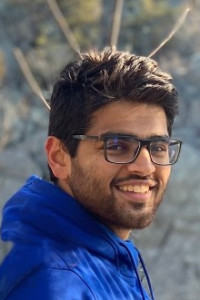PhD-student

Research Description
My research interests lie in studying and uncovering the elusive mechanisms underlying metastatic cancer cell migration. Metastasis is responsible for over 90% of cancer-related deaths, and understanding this cascade is crucial to stopping it. Metastatic cancer cells have been shown to undergo epithelial to mesenchymal transition (EMT), a crucial transformation in cell migration and invasion during early steps of cancer metastasis which also contributes to chemotherapy resistance. Furthermore, transforming growth factor-ß (TGF-ß) has been identified as an integral driver of EMT processes in lung and breast cancers. Recent evidence shows clusters of cancer cells invading into healthy tissues in a coordinated manner, leading to worse off outcomes for patients and lower disease-free survival rates. While mechanisms and interactions of single-cell migration are well established, there is little understanding about mechanisms underlying collective invasion and the influence of dynamic TGF-ß signalling pathways that promote EMT, collective invasion and confer resistance to anti-cancer therapeutics.
Current in-vitro cancer models cannot accurately mimic tumour tissues' dynamic plasticity and their interplay with the tumour microenvironment (TME) to investigate the above-stated interactions and mechanisms. On the other hand, microfluidics enables us to incorporate what the current systems lack - mechanical cues, cancer tumour plasticity, changes in microenvironment and biochemical gradients that cells experience during cell invasion in the human tissues in physiologically relevant settings with high-throughput.
My current project utilises novel microfluidic systems to investigate the underlying molecular and biophysical mechanisms of cell invasion of lung and breast cancers, two of the most commonly diagnosed cancers worldwide in incidence and mortality. Using self-orienting microbuckets encapsulated in hydrogel matrices, I aim to understand the interplay between various cell types (cancer cells, CAFs, stromal fibroblasts, immune cells), the role of biophysical, biochemical and intercellular cues in EMT and collective invasion.
Looking for information on one of our topics, a new place to conduct your research or experienced research to join forces with? Feel free to contact us.!